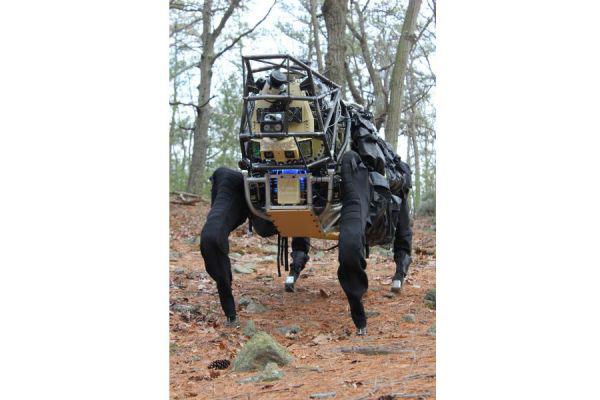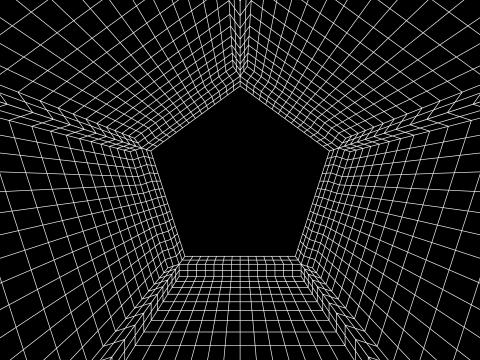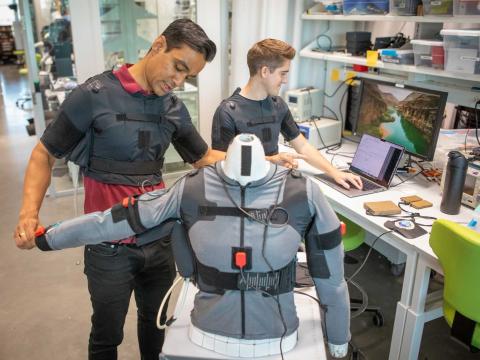U.S. Marines Assess Robotic Systems in Jungle Environment
The U.S. Marine Corps Warfighting Lab this week wrapped up an Advanced Warfighting Experiment (AWE) in the jungles of Hawaii, which tested a total of 16 systems including unmanned ground vehicles. The experiment was part of the July 9 -14 Rim of the Pacific exercise and could help determine how future Marine forces will fight and which technologies they will use.
The experiment included Marines aboard Navy ships as well as three company landing teams, a relatively new organization construct for the service. The company landing teams are altered rifle companies and represent a different approach to the Battalion Landing Team.
The teams deployed with 16 systems in various stages of development, including the Legged Squad Support System (LS3) and the Ground Unmanned Support Surrogate (GUSS), both of which are unmanned ground systems designed primarily to haul heavy equipment around the battlefield. GUSS is a wheeled vehicle that can carry approximately 1,800 pounds and is designed for autonomous speeds of five miles per hour—about the speed of dismounted troops. It operates in three modes: teleoperated, semiautonomous and autonomous.
The LS3 is a semiautonomous legged robot that can carry 400 pounds, follow squad members through rugged terrain and interact with troops in a manner similar to a trained animal and its handler. The robot also could serve as a mobile auxiliary power source to recharge batteries for radios and handheld devices. “We’ve got a number of autonomous vehicles assisting small, foot-mobile forces with moving supplies,” says Lt. Col. Charles Berry, USMC, head of the Marine Corps Warfighting Lab’s Field Testing Branch.
The experiment also included the Marine Air Ground Task Force Enabler-Light, which is a mobile command and control suite with a variety of radios and workstations. It connects tactical networks to the Global Information Grid with over-the-horizon communications and serves as a company landing team combat operations center. The Network Management System displays network information and allows the remote management and configuration of mobile ad-hoc networks. The Next Generation Command and Control System is a family of radios providing voice, video, data and position location information via a mobile ad-hoc network.
Meanwhile, the Ultra Heavy-Lift Amphibious Connector is a tracked system offering ship-to-shore transport and littoral movement. Brig. Gen. Kevin Killea, USMC, director of the Futures Directorate, commander of the Marine Corps Warfighting Laboratory and vice chief of naval research, has cited ship-to-shore connectors as a major need for the future.
Rather than sticking to traditional operating procedures, AWE Marines are encouraged to think of new and different ways to use the technologies. “A challenge you try to overcome early in experimentation is getting into the experimentation mindset. They do a lot of training, and they train to standards. When we experiment, we’re not training to standards. We’re trying to take a look at how we might fight, not how we know and have proven we should fight,” Col. Berry declares.
During the AWE, some Marines sent GUSS ahead and used the camera to provide surveillance. Additionally, some left the unmanned vehicles on the road while they maneuvered along the tree line, using the jungle canopy as cover. And one young officer suggested having GUSS deliver supplies by itself while using an unmanned aerial system to monitor its progress. “Admittedly, we didn’t do that, but he was thinking about how we might do that and coming up with ideas on how to use these technologies en masse to support operations,” Col. Berry states.
Col. Berry reports that the systems performed well, but each has pros and cons and may or may not eventually be fielded. “One of the difficulties is that you have to maintain and fuel these things. There’s some overhead with regard to that,” Col. Berry offers. “However, they can be incredibly beneficial for helping move supplies around the battlespace. A five gallon jug of water is pretty heavy. When you’ve got a requirement to get each Marine one to three gallons a day—depending on the climate and tempo of operations—that’s a lot of water.”
Additionally, the jungle environment challenged some systems, including communications and sensor issues. “The Marines have been using GUSS in different modes, including a following mode where they just put it behind them and it follows, but we found in some circumstances that doesn’t work very well because the sensors are challenged by some of the vegetation. Then they try to teleoperate it, which is like driving a remote-control car,” the colonel explains.
Still, he says, none of the systems left him disappointed. “The systems actually performed out here. Some of them struggled more than others, but that’s because we challenged them. If we don’t have some struggle, then it’s because we didn’t push them hard enough,” he says.





Comments